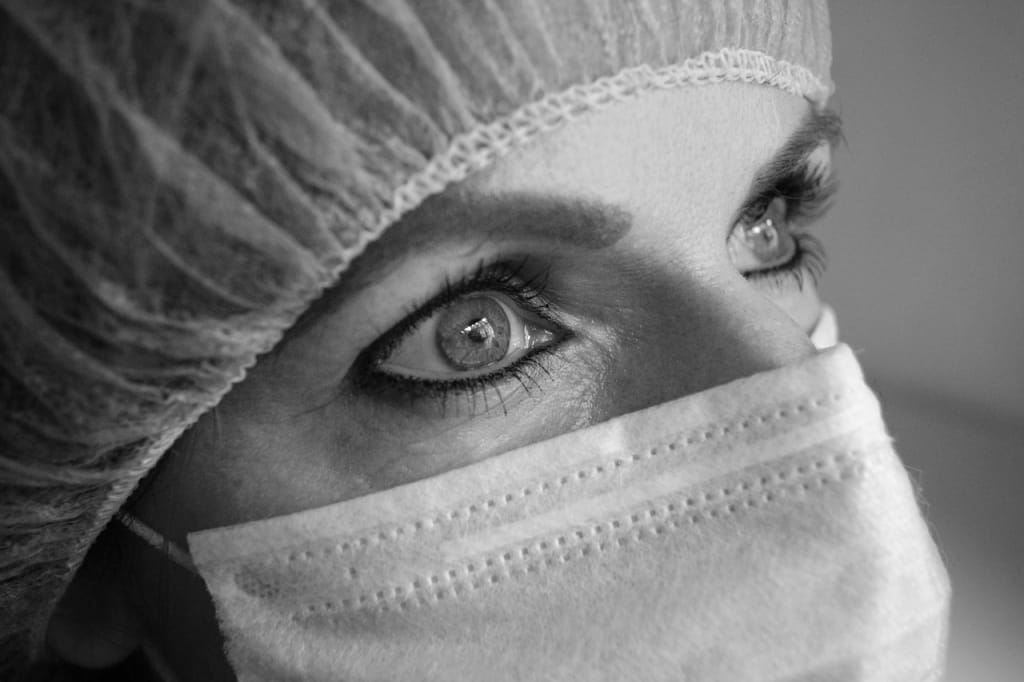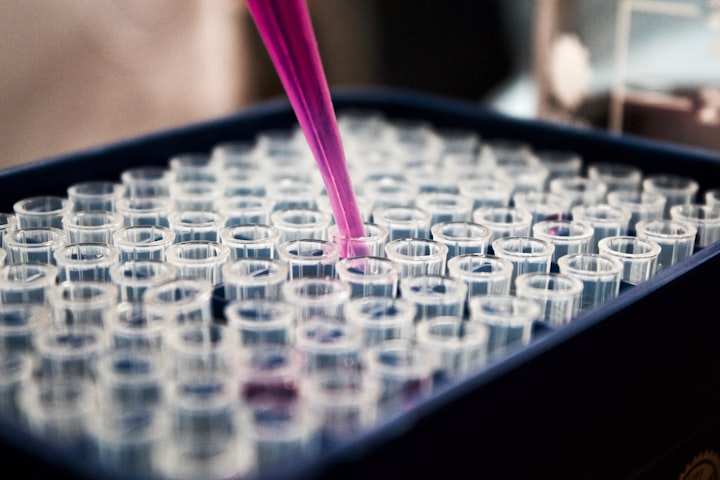Just Like 100 Years Ago
Isolation, social distancing and quarantine have so far proved to be the most fundamental weapons against the virus. Their use dates back to the 19th century. Medical advances have not yet been able to respond to the pandemic. The warnings that governments around the world ignored The costs of the lack of prevention

History can be a hobby for many. For others it's a profession. But for countries and their societies it must be an obligation. Studying it, understanding it and keeping it in mind will prevent us from making old mistakes again.
COVID-19 took the world by surprise.
The pandemic spread at ultrasonic speed to every corner of the planet. Many may argue that it was impossible to stop or predict. That when a virus appears nothing can be done and that public measures will always (at least for a while) go after the virus with high lethal power.
The past has shown that pandemics can happen. In fact, pandemics will happen. It is inevitable. So history shows.
The Spanish Flu in 1918 or the 1968 pandemic.
Tens of millions of deaths between the two. But you don't have to go that far back in time. This century, only a fifth of which has passed, has seen four pandemics. SARS, MERS, Influenza A and COVID-19. However, each appearance of a new virus caused anxiety.
However, each appearance of a new virus provoked anxiety, not only because of the uncertainty generated by its discovery regarding its scope, but also because on each occasion there were prestigious specialists who maintained that societies were not prepared to face it.
In 2002, SARS appeared and in a short time demonstrated a great killer and propagation power. Almost three dozen countries were affected. Around 8500 infected and more than 800 dead.
Those frightening numbers are now minimized by the spreading and damaging capacity of the coronavirus. They seem insignificant in the face of the current global tragedy.
Science has advanced the unthinkable in recent decades.

Progress is continuous. Let's not talk about comparing it to the medicine of a century ago. If you compare today's science with medical science of 30 years ago, you will discover abysmal differences.
Perhaps this constant progress has meant that, at first, this new pandemic has been underestimated (and even the possibility of its appearance) and, at the same time, has overestimated the possibilities of modern medicine. And especially of the health systems. Despite the fact that experience indicated that this could happen at any time.
In fact, this is the fourth time in 18 years that a pandemic has been set in motion. What happens is that the volume and consequences of this are much greater and more widespread.
Against this backdrop, the measures most repeated by all the world's governments are the same ones used more than 100 years ago. Weapons discovered at the end of the 19th century were the most effective in the 21st century.
Social distancing and isolation were the methods that proved most useful at this stage of the struggle.
Mandatory quarantine and the study of contacts of those infected so far were the most effective tools.
Those countries that, at the beginning, decided to continue with their normal life and in which the rulers boasted about it, had to revise their attitude soon after seeing the virulence of the contagion and the exponential increase in the number of deaths.
These measures (or tools) proved their worth. It is not because they are old that they should not be put into practice. Their effectiveness is evident.
Of course, no one can deny that medical advances have managed to prevent everything from getting worse.
The testing of different drugs, the use of respirators, the development of intensive care, the complexity of emergency medicine, the genetic sequencing of the virus.
But 21st century science has not yet been able to defeat the virus, or even contain it.
Doctors John Hick and Paul Biddinger published in the prestigious scientific magazine The New England Journal of Medicine an article entitled: "The new Coronavirus and the old lessons". They argue that "the treatment offered to patients in areas where COVID-19 has exploded is similar to what they might have received during the 1968 flu pandemic: quarantine, isolation, social distance may be what saves us.
Following the passage of SARS, the World Health Organization made that explicit in its conclusions. "This time the world was lucky." Everything could have been worse. SARS should have given us enough warning. But mankind decided to carry on as if it hadn't happened. The alarms were ignored.
In 2019, WHO issued a little-or-unheard alert:

"The world is not prepared for a pandemic caused by a rapidly spreading airway virus. The 1918 flu sickened a third of the population and killed about 50 million people.
If a similar pandemic were to occur today, with a population four times larger than then and travel times to any point on the globe of less than 36 hours, up to 80 million people could die," the report concluded.
SARS had other characteristics.
It was contagious once the symptoms appeared, it was less likely to spread, and it was quickly identified which animal caused the zoonosis.
The Coronavirus can spread over a long period of time and it can take up to 14 days for symptoms to appear.
Another disadvantage is that asymptomatic and oligosymptomatic infected animals (those showing very mild symptoms) spread the disease without noticing it.
The tests seem necessary but are insufficient. This insufficiency occurs from the point of view of quantity (their scarcity is a problem: another issue derived from unpredictability) and since they are not enough by themselves.
This does not mean that they are not essential as instruments to know the situation, to avoid contagion and to fight the disease.
The characteristics of today's world have made the picture worse. The possibility of moving easily from one end of the planet to the other made the virus disperse with an inconceivable speed.
The advantage of globalization: communications are also fast (immediate) and it was possible to take preventive measures and copy models that worked in other countries.
After SARS and MERS
Countries that seemed to have learned the lesson were the ones that suffered from it. Or at least some of them like Singapore and South Korea.
The Korean response to SEM was poor and insufficient. It seems - in this health crisis nothing is definitive - that their methods against the coronavirus worked.
It made controversial and debatable decisions, applied advanced technology and budget, and had one more element: time. South Korea was prepared because it took note of the failure of SARS.
The ultramodern weapon that some countries used is the tracking and tracing of all those who came in contact with a positive case. Thus, with massive tests and selective and mandatory isolation, Korea managed to contain the contagions and, in particular, the deaths.
However, this method of tracing is at odds with individual freedoms. The government acts compulsively. No one infected or in contact with it can move freely. As soon as this news became known in European countries, it provoked rejection and strong criticism.
However, in view of the daily increase in deaths in Italy and Spain, some in those countries see with different eyes the applications that allow these tracings.
The Italian government would have developed one of them. This type of tool (to have the data of people's location and to be able to decide to hospitalize them compulsively) used outside a health crisis of these characteristics implies an enormous risk.
The Spanish infectious disease expert Adolfo García Sastre said a few days ago in an interview with El País in Spain: "The main problem is not so much whether the containment measures have been taken sooner or later. This comes from much earlier. It was known that these pandemics could occur.
We know that with the flu they happen every 20 or 30 years and that they have a similar severity to the current one, but we do not prepare for them. It's not a problem for any particular government or country. Nobody fought to finance this.
Health or Money?

A dichotomy between health and the economy has been established many times. However, the losses that this disease will cause, although it is not yet known exactly what the figure will be, will be enormous.
The magnitude of the economic damage is known to be colossal. The losses will be far greater than the amount of money that could have been invested in ensuring that the emergence of this scourge would not find societies without major defenses.
The specialists who are worried about finding a way out of the coronavirus -developing vaccines, looking for drugs that are effective, investigating more about how the virus works- know that another pandemic will come after this one is overcome.
They want to be heard and to be able to count on budgets and scientific and sanitary weapons of the XXI Century to face it.
About the Creator
creatorsklub
I write about tips and strategies for enhancing life. Some advice and insights because life is already to hard to be alone on it!
Enjoyed the story? Support the Creator.
Subscribe for free to receive all their stories in your feed. You could also pledge your support or give them a one-off tip, letting them know you appreciate their work.






Comments
There are no comments for this story
Be the first to respond and start the conversation.